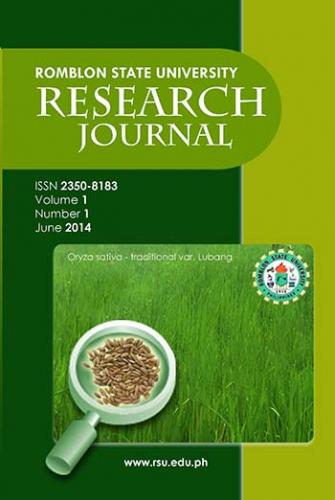The Growth and Yield Performance of Three Rice Genotypes with Inorganic and Organic Fertilizers under Aerobic Condition
DOI:
https://doi.org/10.58780/rsurj.v1i1.13Keywords:
genotypes, hybrid, inbred, traditional, aerobic rice, organic and inroganic fertilizerAbstract
This study consisted of three separate single-factor experimens, each experiment using a different rice genotype but the same fertilizer treatments and the same methodology. It aimed to determine the effects of using organic and inorganic fertilizers alone and in combination on the growth and yield of rice under aerobic condition. The genotypes used in the study were Malakas 1 (hybrid), Rio Grande (inbred) and Lubang (traditional). Five combinations of inorganic and organic fertilizers were used. Study showed Malakas 1 and Rio Grande were significantly earlier than Lubang variety in days to flowering to maturity (± 7days) and its plant height. In the leaf area index there was no differences among the genotypes and treatments. For the number and productive tillers, the traditional variety Lubang had significantly higher yield than Malakas 1 and Rio Grande and relatively the treatment 4 or 75% organic fertilizer had the lowest yield compared to the higher level of inorganic fertilizer. In the length of panicles, there was no difference among the genotypes and treatments. In the case of number of filled spikelets, Rio Grande had the lowest compared to Malakas 1 and Lubang at all treatments. Lubang had the significant lowest 1000 grain weight against Malakas 1 and Rio Grande. The effect of the treatments (F1 to F5) on the biomass of the three genotypes had significant variations. The yield of Malakas 1 (6.7 t•ha-1) and Rio Grande (5.52 t•ha-1) were significantly higher than Lubang (2.28 t•ha-1)
Downloads
Published
How to Cite
Issue
Section
License
Copyright (c) 2014 Romblon State University Research Journal

This work is licensed under a Creative Commons Attribution-NonCommercial 4.0 International License.


